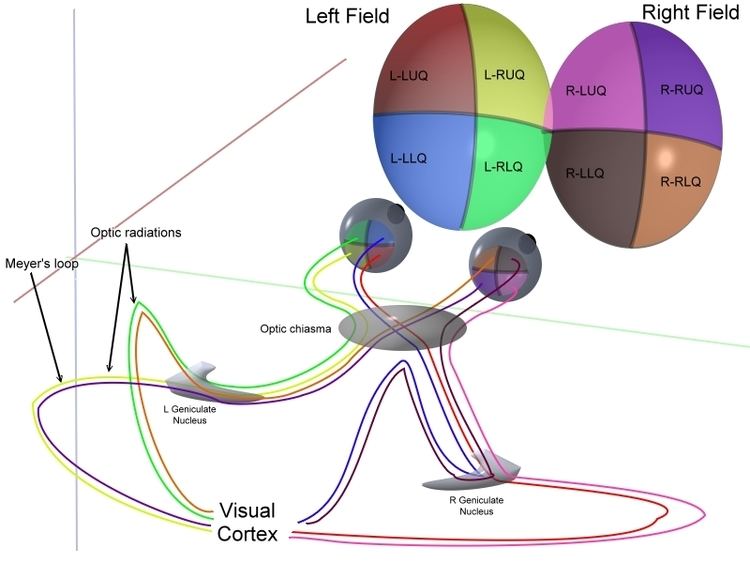Latin radiatio optica Dorlands/Elsevier r_01/12686139 | NeuroNames ancil-529 FMA 61941 | |
 | ||
TA A14.1.08.673A14.1.09.542A14.1.09.547 | ||
The optic radiation (also known as the geniculocalcarine tract, the geniculostriate pathway, and posterior thalamic radiation) are axons from the neurons in the lateral geniculate nucleus to the primary visual cortex. The optic radiation receives blood through deep branches of the middle cerebral artery and posterior cerebral artery.
Contents
They carry visual information through two divisions (called upper and lower division) to the visual cortex (also called striate cortex) along the calcarine fissure. There is one such tract on each side of the brain. If a lesion only exists in one optic radiation, the consequence is called quadrantanopia, which implies that only the respective superior or inferior quadrant of the visual field is affected.
Structure
The upper division:
The lower division:
Parts
A distinctive feature of the optic radiations is that they split into two parts on each side:
Function
The optic radiation contains tracts which transmit visual information from the retina of the eye to the visual cortex. Lesions of the optic radiations are usually unilateral and commonly vascular in origin. Field defects therefore develop abruptly, in contrast to the slow progression of defects associated with tumors.
Examination
Tracts contained within the optic radiation are examined as part of a cranial nerve examination.
